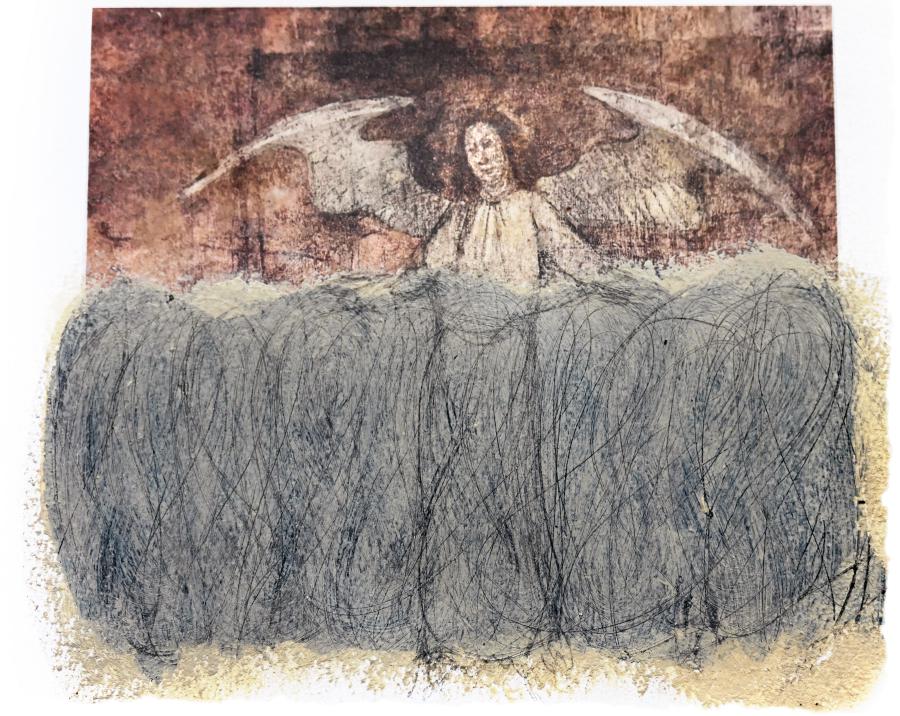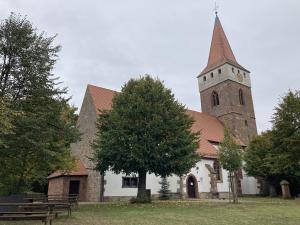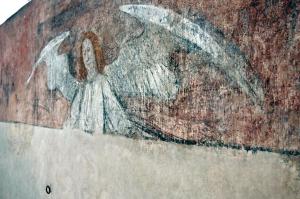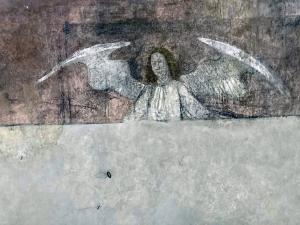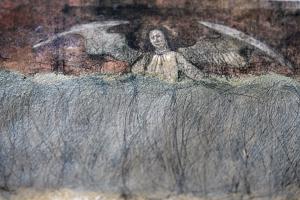TANGELUS
Text | Photography | Drawing: Peter Michael Lupp
Place-related point of reference for the poetic thinking pictures
Protestant parish church, Minfeld. 11th-15th century wall and ceiling paintings (13th century).
The protestant church in Minfeld is a gem of medieval architecture and dates back to the 11th century. It is a Romanesque hall building with a recessed rectangular choir, adjoined by a tower that was raised in 1613. Around 1500, the choir was equipped with two ribbed vaults and a sacristy, as well as two side chapels with asymmetrical net vaults.
Of particular importance are the wall paintings in the choir, which date from different construction phases. The depiction of St. Martin on horseback has been preserved from the time the choir was built (second half of the 11th century). The remains of the murals on the western chancel arch wall are dated to the second half of the 13th century.
Scenes from the New Testament are depicted, including the Adoration of the Magi, the Temptation of Christ, the Resurrection, the Descent into Hell and Noli me tangere. In the lower area, the Wise Virgins and the Last Judgement. In the vault of the side chapels you can discover a “Garden of Paradise”, apostles and prophets. The church was repainted a third time in 1617 in the spirit of the Reformation.
Remains of the 15th century paintings can still be found in the vaults of the choir and the south wall. Around 1500, the choir was rebuilt and painted with figures. The “thinking pictures” of the medieval church date from that time and focus on a beautiful depiction of an angel [Angelus] spreading his wings wide and looking towards us with a benevolent expression on his face. It is part of the angel frieze that was originally located in the lower section of the south wall under the Gothic tracery window. After careful restoration, it has become more visible again with another angel. It appears to stand behind a “curtain” up to chest height, which was created by the restoration work.
